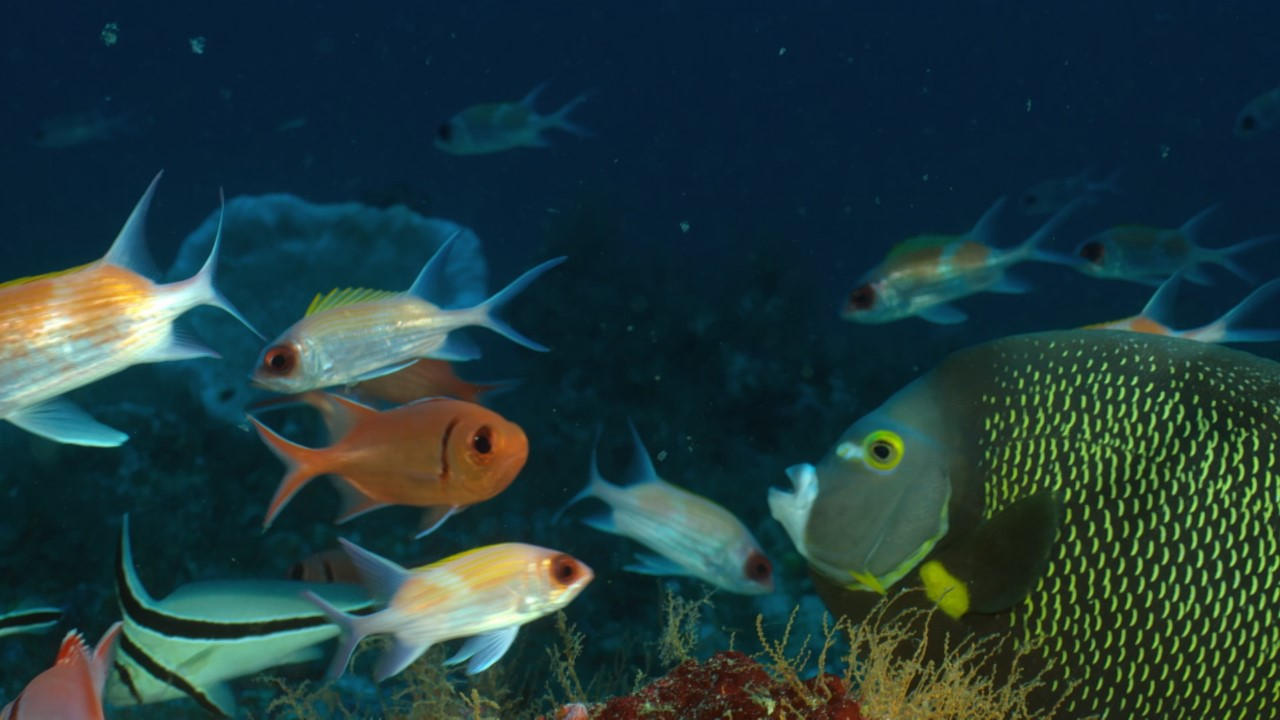The fish that eats piranhas for breakfast
- Published
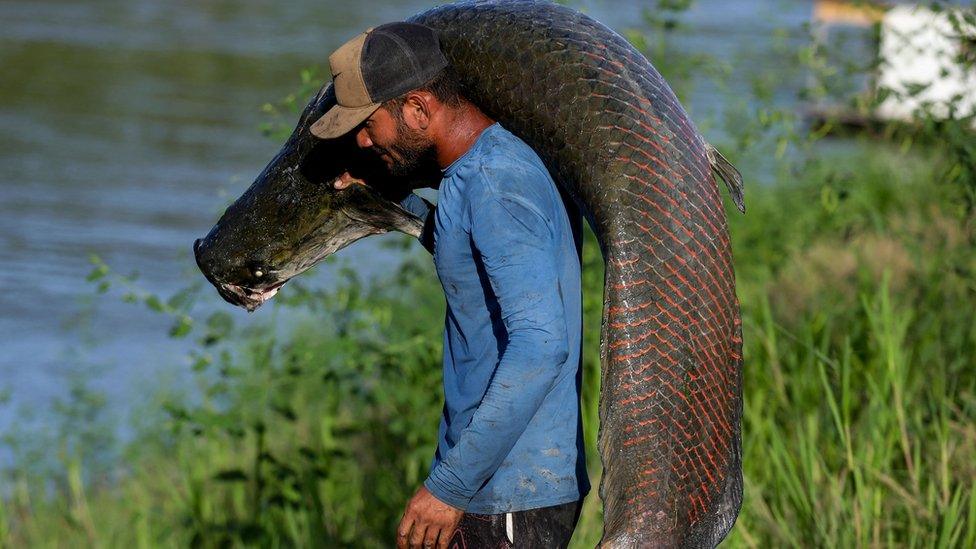
The fish can grow to four metres (13ft) in length and weigh 200kg (440lb) or more
Guillermo Otta Parum has been fishing in the Bolivian Amazon his whole life, for more than 50 years.
At first, Guillermo was catching native fish, such as the various kinds of catfish which inhabit the river.
But then a giant freshwater fish arrived, known locally as paiche or Arapaima gigas, to give it its scientific name.
"I thought this creature was a water snake, that it would attack everything, that eating it would be bad for you, that it might be poisonous," he recalls.
In fact, it is one of the biggest freshwater fishes in the world, growing up to 4m (13ft) in length and weighing 200kg (440lb) or more.
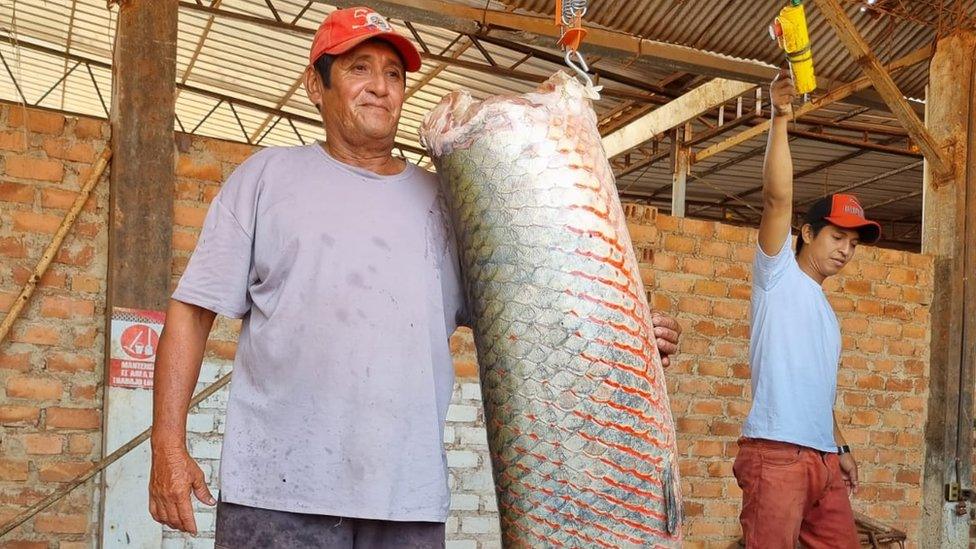
Guillermo Otta Parum has been a fisherman for 50 years
It is estimated that every year, the paiche spreads another 40km (25 miles) deeper into the rivers of the Amazon basin.
Federico Moreno, director of the Beni Autonomous University's Centre for Aquatic Resources Research, says its size and appetite make it a serious threat to native fish stocks.
"It is a territorial fish, it takes over a body of water and scares off the native species. [That] is one of the serious problems. The other species flee from the predator and enter other bodies of water much further away, more remote and difficult to access."
No one really knows the exact year that the paiche first appeared in Bolivia.
It is generally believed its arrival was the result of a breach of a paiche fish farm in Peru, where the fish are native. From there, they spread into Bolivia's rivers.
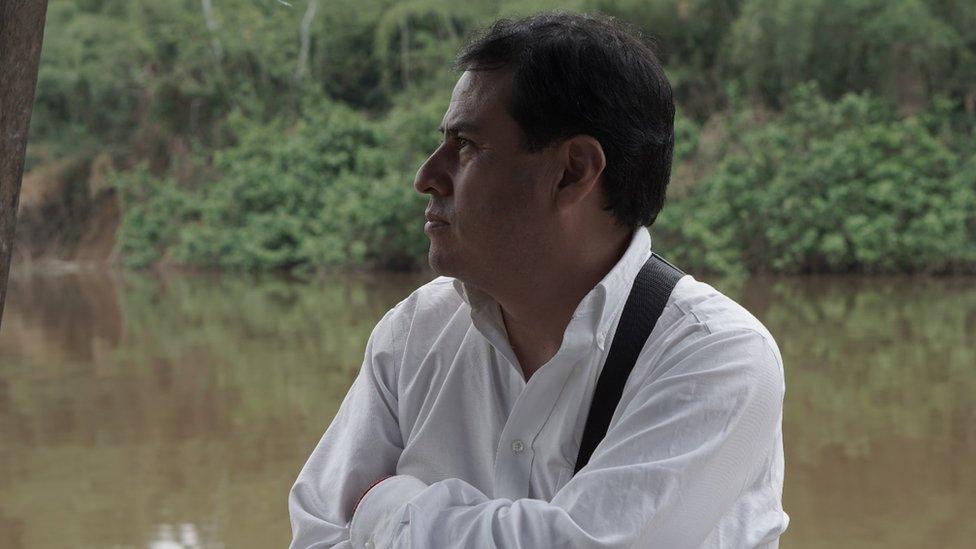
Biologist Fernando Carvajal has spent years studying the Paiche
Fernando Carvajal is a biologist and expert on the paiche. He says they are a ravenous species.
"During the first years of life, the paiche grows at the rate of 10kg (22lb) a year. That means the paiche is eating a lot of fish."
Unlike other predatory fish like piranha, it only has small, not particularly sharp teeth.
But its lack of impressive teeth does not stop it from eating piranha and a host of other fish, along with plants, molluscs and birds, all of which it hoovers up like a giant vacuum cleaner.
It also frightens off any fish which tries to eat the paiche's young.
Fernando Carvajal says there is no firm data about the impact of the paiche, but he says that anecdotally, fishermen are reporting that the numbers of some native species are dwindling.
"In the next one or two decades, the paiche is going to spread to all the potential areas where this species can live," he warns.
"We know that around the world, most invasive cases are bad for nature. Invasive species are considered the second-biggest reason for the loss of biodiversity after habitat destruction."
However, for local fishermen, the arrival of the paiche has been a boon. Having been initially afraid of it, it did not take long for fishermen to realize its potential, says Guillermo Otta Parum.

Paiche fishing boat on the Yata River in the Bolivian Amazon
"When I brought the first fish, I would give the customers small pieces as a gift for them to try so they would get a taste for it."
Some fishermen even pretended it was a type of catfish to overcome people's suspicions about eating such a huge specimen.
Now paiche are eaten across Bolivia.
Edson Suzano runs a paiche-processing plant in Riberalta, a town in north-east Bolivia close to the Brazilian border.
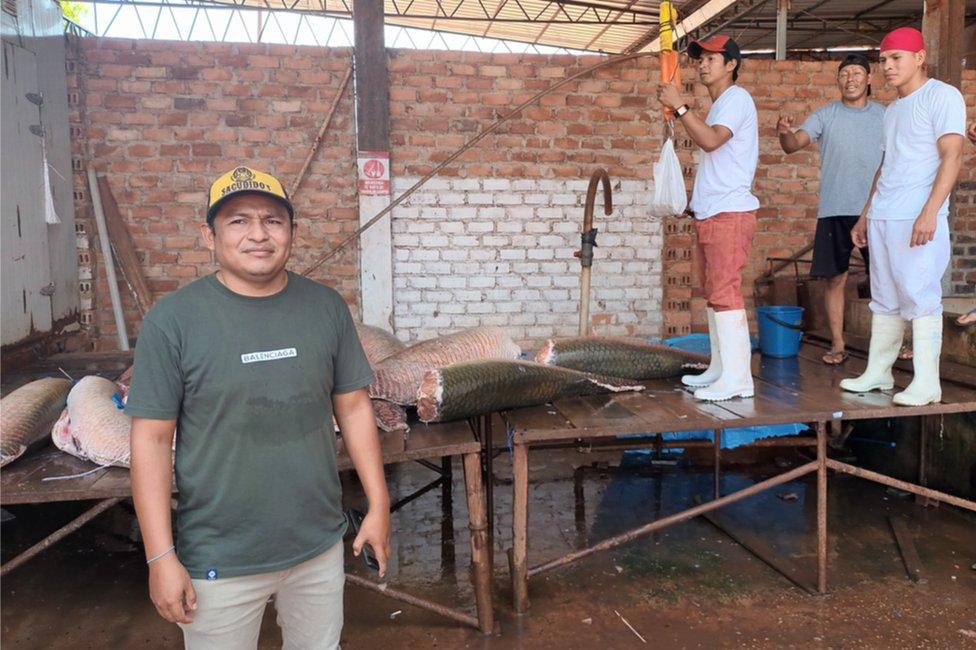
Edson Suzano (left) says the paiche is affordable
"We sell it everywhere - supermarkets, markets. There are different cuts, so it is affordable. We buy and process around 30,000kg (66,138lb) per month," he says.
The challenge for the fishermen is trying to find the paiche in the huge expanse of the Amazon.
The fish has a lung-like organ and has to come up for air regularly to breathe and so likes calmer water. It prefers to live in lakes and lagoons, but migrates when it feels it is in danger.
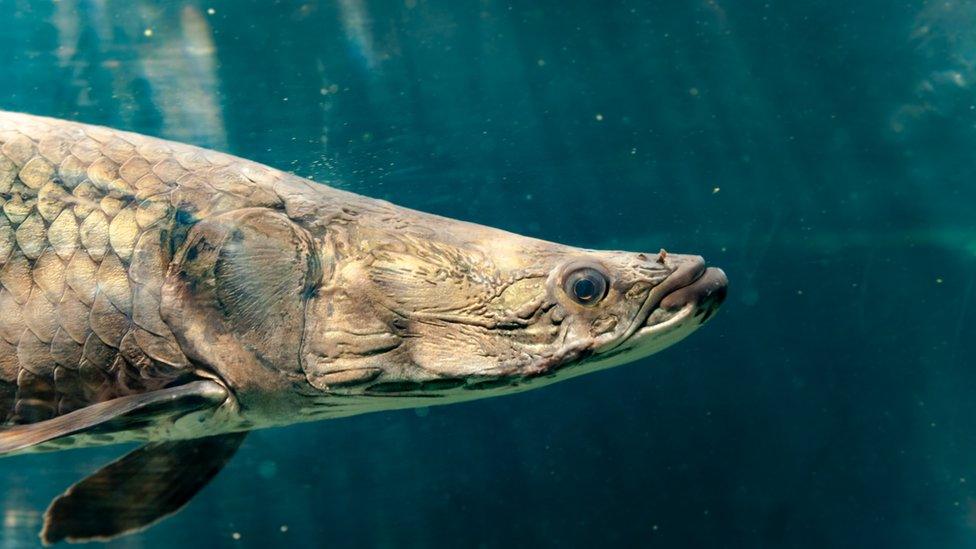
The paiche migrates when it feels it is in danger
Most of the fish Edson Silvano processes used to arrive by boat.
Now the fishermen travel to ever more remote areas to catch the paiche and have to transfer from boats to canoes, on journeys of up to two weeks. This is putting them in conflict with indigenous communities.
These communities have been given land titles to many of the remote lagoons where paiche are now to be found and have themselves started fishing for and selling the fish.
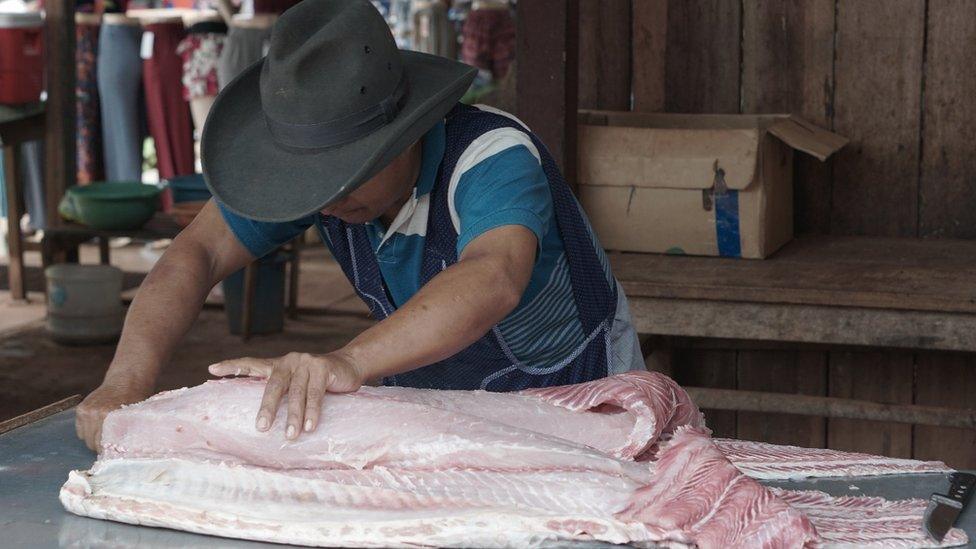
Paiche being prepared for sale at Riberalta's fish market
Now commercial fishermen have to obtain special licences to work in these areas. But fishermen like Guillermo Otta Parum say that even when they have the correct paperwork, they are often turned away.
The indigenous communities argue that they are only trying to protect the resources which the Bolivian government has recognised they have a right to control.
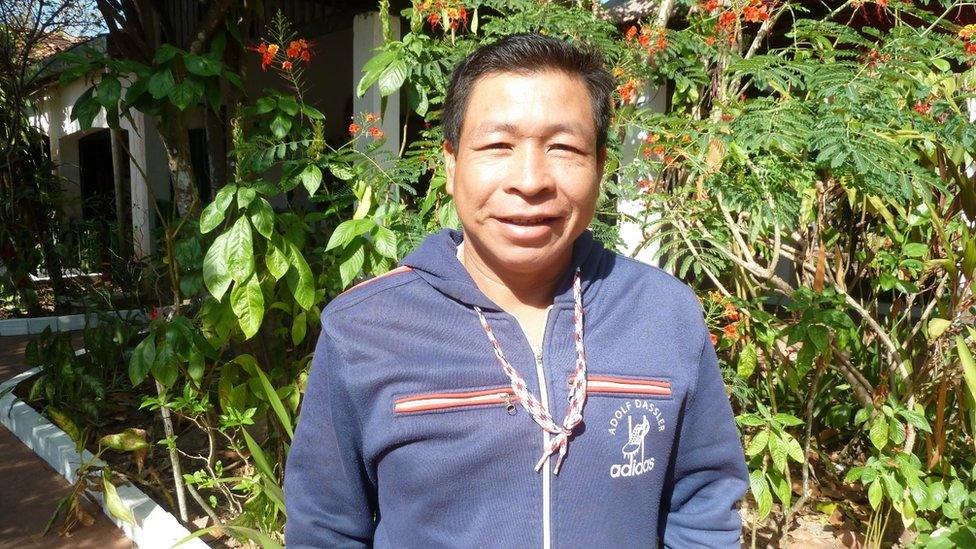
Juan Carlos Ortiz Chavez is a paiche fisherman who belongs to the Alto Ivon Tco Chacobo indigenous community:
Juan Carlos Ortiz Chávez belongs to the Alto Ivon Tco Chacobo indigenous community.
He says that in the past, indigenous people were scared of commercial fishermen. "But this new generation of young people has changed, because we have made our rules so that people can't come and take from us any more," he explains.
Scientists such as Federico Moreno hope that fishing generally, whoever is doing it, will keep paiche numbers in check.
"Keep hunting them, keep fishing for them all the time and that could keep a balance between the different species."
To hear more about the paiche, listen to Assignment on the BBC World Service
- Published4 August 2023
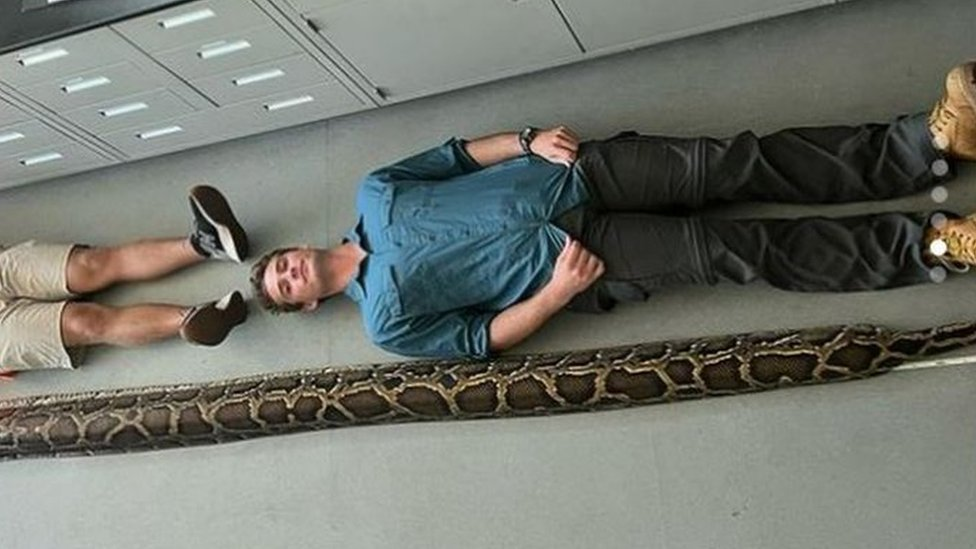
- Published17 December 2022
